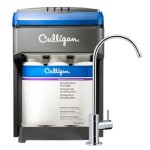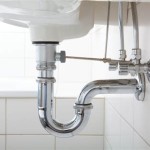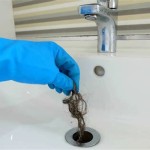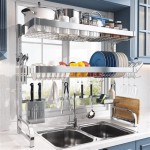How To Fix Slow Draining Bathroom Sink
A slow-draining bathroom sink is a common plumbing issue that can be frustrating to deal with. There are several potential causes of a slow-draining sink, and the best way to fix it will depend on the underlying cause. In this article, we will discuss the most common causes of a slow-draining bathroom sink and provide step-by-step instructions on how to fix each issue.
1. Clogged Drain
The most common cause of a slow-draining bathroom sink is a clogged drain. Hair, soap scum, toothpaste, and other debris can build up in the drain over time, creating a blockage that prevents water from draining properly. To fix a clogged drain, you can use a drain snake or a chemical drain cleaner. If you use a drain snake, insert it into the drain and turn the handle to auger out the clog. If you use a chemical drain cleaner, follow the manufacturer's instructions carefully.
2. P-Trap Clog
The P-trap is the curved section of pipe that connects the sink drain to the main drain line. Over time, hair, soap scum, and other debris can build up in the P-trap, creating a clog that prevents water from draining properly. To fix a P-trap clog, you will need to remove the P-trap and clean it out. To do this, place a bucket under the P-trap to catch any water that may leak out, then loosen the nuts that hold the P-trap in place. Carefully remove the P-trap and clean out any debris that has accumulated inside. Once the P-trap is clean, reassemble it and tighten the nuts.
3. Slow Drain Valve
The drain valve is the mechanism that opens and closes the drain. Over time, the drain valve can become worn or damaged, which can cause it to slow down the flow of water. To fix a slow drain valve, you will need to replace it. To do this, turn off the water supply to the sink, then loosen the nut that holds the drain valve in place. Pull the old drain valve out and insert the new one. Tighten the nut to secure the new drain valve in place, then turn on the water supply and check for leaks.
4. Blocked Vent Pipe
The vent pipe is a vertical pipe that allows air to enter the drain system. If the vent pipe is blocked, it can create a vacuum that prevents water from draining properly. To fix a blocked vent pipe, you will need to clear the blockage. To do this, climb onto the roof and locate the vent pipe. Remove any debris that is blocking the pipe, such as leaves, twigs, or bird nests. Once the vent pipe is clear, the sink should drain properly.
5. Mineral Buildup
Mineral buildup can occur in the pipes and drains of your bathroom sink over time, especially if you have hard water. This buildup can restrict the flow of water and cause your sink to drain slowly. To remove mineral buildup, you can use a commercial descaling solution or a mixture of vinegar and baking soda. Pour the descaling solution or vinegar and baking soda mixture into the drain and let it sit for several hours. Then, flush the drain with hot water.
6. Faulty Garbage Disposal
If your bathroom sink is connected to a garbage disposal, the disposal may be the cause of the slow draining. If the disposal is clogged or jammed, it can prevent water from draining properly. To fix a clogged or jammed garbage disposal, turn off the power to the disposal and unplug it. Then, use a wrench to loosen the grinding chamber and remove the clog or jam. Once the clog or jam is removed, reassemble the garbage disposal and plug it back in.

Slow Sink Drain 6 Diy Fixes For Before You Call A Plumber Bob Vila

How You Can Fix A Slow Draining Drain On Your Own Call Ashton Plumbing

How To Unclog A Slow Running Bathroom Sink Drain 10 Options

How Can I Clear A Slow Drain Faq Plumbing By Jake

How To Fix A Slow Draining Or Clogged Bathroom Sink Youtube

Slow Sink Drain 6 Diy Fixes For Before You Call A Plumber Bob Vila

How To Unclog A Drain Without Calling Plumber

Fixing Sink That Drains Slow No Overflow Drain Youtube

How To Unclog A Slow Running Bathroom Sink Drain 10 Options

4 Tips To Fix A Slow Draining Sink







